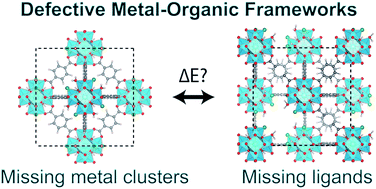Vacancy defect configurations in the metal–organic framework UiO-66: energetics and electronic structure†
Abstract
Vacancy lattice sites in the metal–organic framework UiO-66 are known to have a profound effect on the material properties. Here we use density functional theory to compare the energies of defect arrangements containing missing linkers and missing metal clusters for different choices of charge compensation. Our results show that the preference for missing metal clusters or missing linker defects depends on the charge compensation as well as the overall concentration of defects in the crystal. Both regimes can be experimentally accessible depending on the synthesis conditions. We investigate the electronic structure of the different types of defects, showing that, despite some changes in the localisation of the frontier orbitals, the electronic energy levels are only weakly affected by the presence of point defects.



 Please wait while we load your content...
Please wait while we load your content...